Dishwashers are an essential appliance in the modern home kitchen for providing peace of mind with continually sanitized dishes stocked in your cabinets. Suppose you are considering purchasing a new dishwasher; you probably have wondered how much space to keep between kitchen cabinets for a dishwasher. We’ve researched this topic and have discovered well-researched information to share with you!
Generally, most appliance manufacturers recommend a minimum of 27 inches or more between the edge of the dishwasher door when ajar and the facing cabinets. However, these measurements can vary based on the dishwasher’s size and the kitchen’s square footage.
Perhaps you are considering purchasing a new dishwasher for your home, and you have a few questions before ordering your new appliance. Are you wondering if you need space around your dishwasher? Where is the best location for a dishwasher? These are great questions! Please continue reading; we have well-researched answers to share with you.
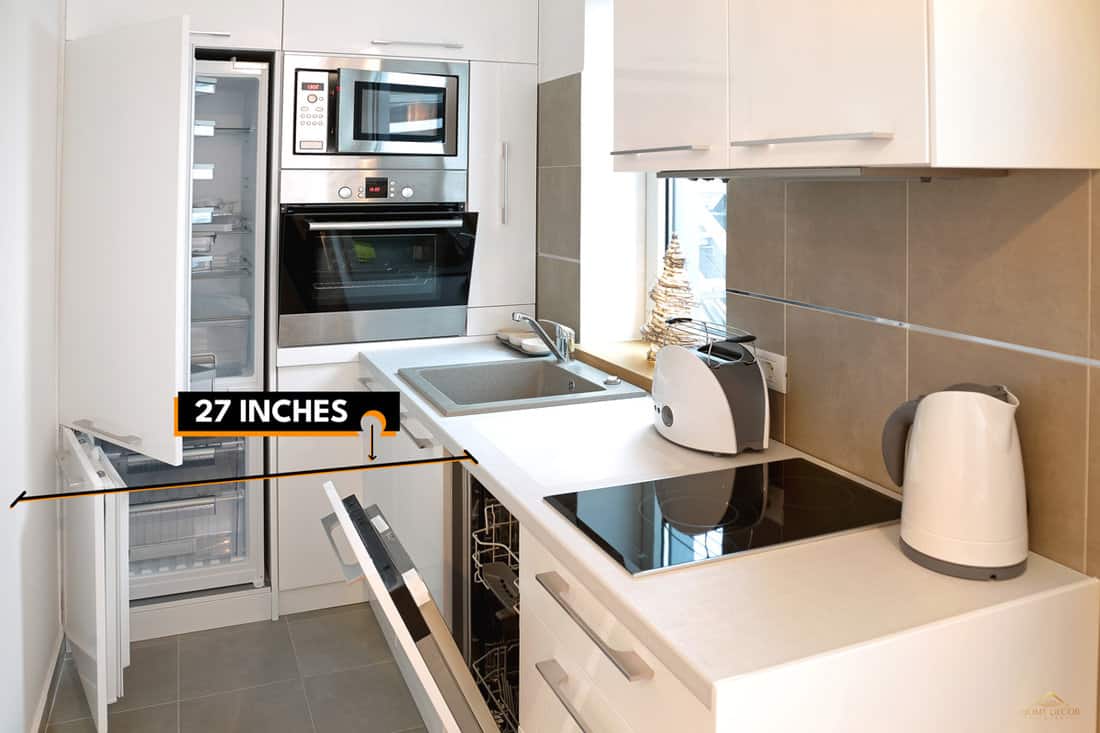
Are Dishwashers Supposed To Be Flush With The Cabinets?
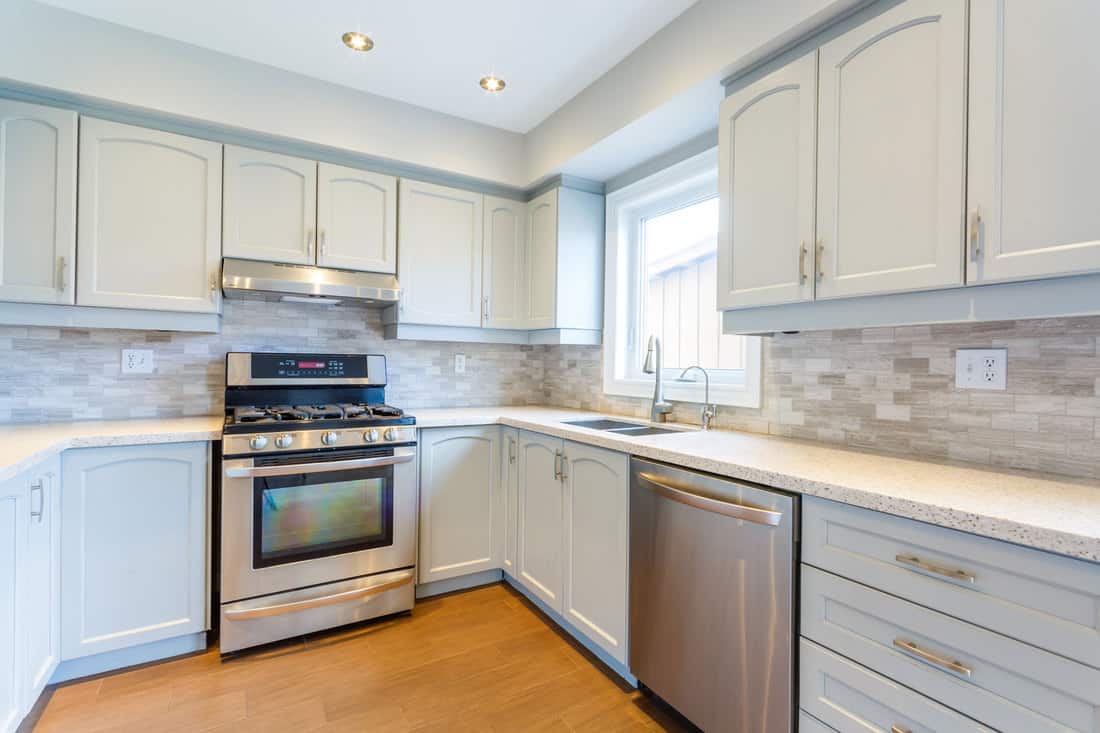
We may include affiliate links and curated AI content to highlight top design styles.
Typically, dishwasher doors are not flush with the cabinets unless the dishwasher is a fully integrated appliance. Standard dishwashers usually protrude past the face of the cabinets by one to two inches. Also, if the dishwasher has a handle, this could add another inch of protrusion.
Suppose you prefer your appliances to be flush with your kitchen’s cabinetry. Your best option would be to measure the rough opening or cabinet space and purchase an integrated dishwasher to fit the space.
For best results, measure the opening twice with a contractor’s measuring tape for the most accurate measurements. Also, you could add a cabinetry door to the front of your dishwasher for added weight and a sleek, integrated modern aesthetic.
Do You Need Space Around A Dishwasher?
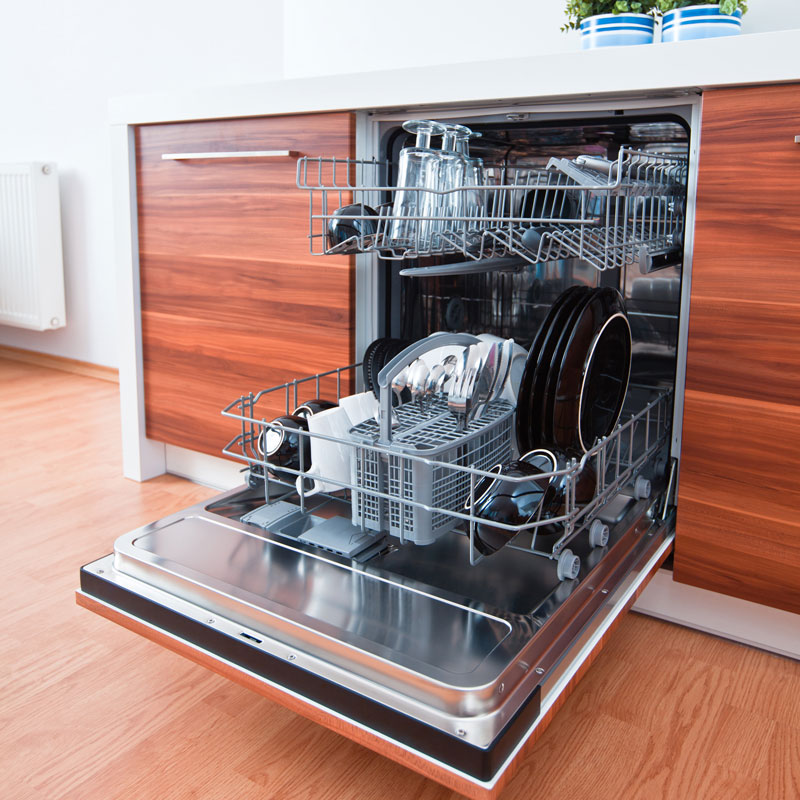
Yes, having space around your dishwasher is very important to install and enjoy the benefits of having a functional dishwasher in your kitchen. Suppose the dishwasher didn’t have ample room; you would not be able to load or unload the dishwasher with the door completely open.
The Maytag company states that it is required to have a minimum of 27 or more inches in front of the dishwasher to open and close the door successfully. Also, depending on the dishwasher’s location, you may want to have more than 27 inches of space in front for easy access.
Another critical measurement to consider is if you install your dishwasher in a corner next to a wall. Be sure to allow at least two inches between the dishwasher and the cabinet or wall. This ensures you can open the door without issues, and provides a straightforward installation process.
Where Should The Dishwasher Go In The Kitchen?
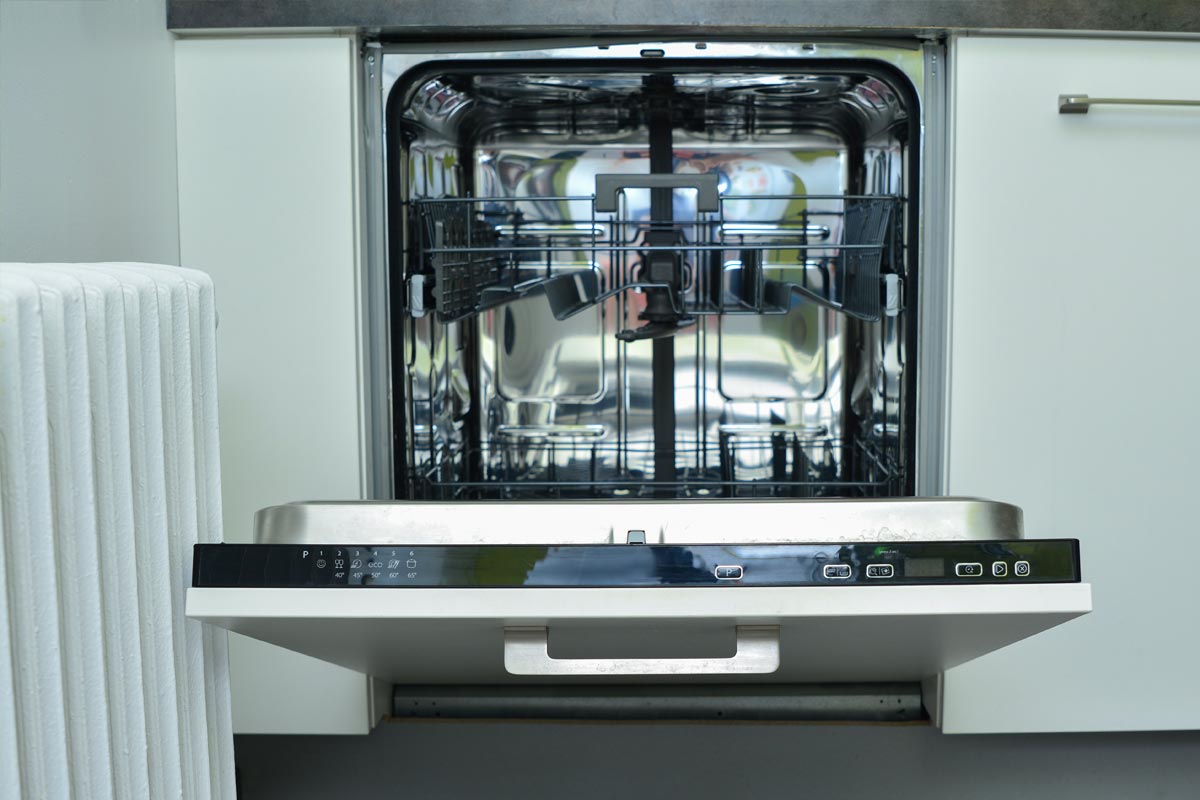
Selecting the best location for your dishwasher is usually determined by your kitchen’s size and the accessibility of electrical and water hookups. Remember, the dishwasher must be connected to a dedicated 15- or 20-amp line, which connects to a circuit breaker.
Be sure to contact a licensed, professional electrician to install the electrical lines. Also, the dishwasher must connect to a water line and a hose for wastewater.
Before you decide where to put your new dishwasher, consider tracking your kitchen’s traffic patterns for a few days to determine what areas are most visited. This way, you will get a better idea of the flow of your kitchen and where the dishwasher will best suit your needs.
Considerations For Installing Dishwashers
Most kitchen designers and plumbers highly suggest installing your new dishwasher next to the kitchen sink or as close as possible for easier and less expensive installation. Also, loading your dishwasher close to the sink is great for scraping, rinsing, and loading your dirty dishes into your dishwasher.
Another vital consideration for dishwasher placement is installing it where it makes ergonomic sense for you. Home designers suggest installing the dishwasher on the same side of the kitchen sink as your dominant hand. Suppose you are right-handed. Install the dishwasher on the right-hand side of your kitchen sink for increased productivity.
Moreover, if you install a free-standing or integrated dishwasher, the options for installation will differ.
Integrated Dishwashers
Install an integrated dishwasher semi-permanently near the kitchen sink, flush with the countertop. The integrated dishwashers are compact and slender, perfect for utilizing less space and increasing the kitchen’s functionality.
Also, integrated dishwashers are the quietest option because the installation process and cabinetry helped muffle disruptive noises.
Free-Standing Dishwashers
Free-standing dishwashers are the most commonly utilized option for most apartments and houses. Install these appliances near the sink or any opening with electricity and water connections.
Please remember that free-standing dishwashers will not be flush with the countertop nor integrated into the kitchen’s cabinetry. A free-standing dishwasher is a good option if you plan to move or don’t want a semi-permanently installed dishwasher in your home kitchen.
How Do I Secure My Dishwasher To The Side Cabinet?
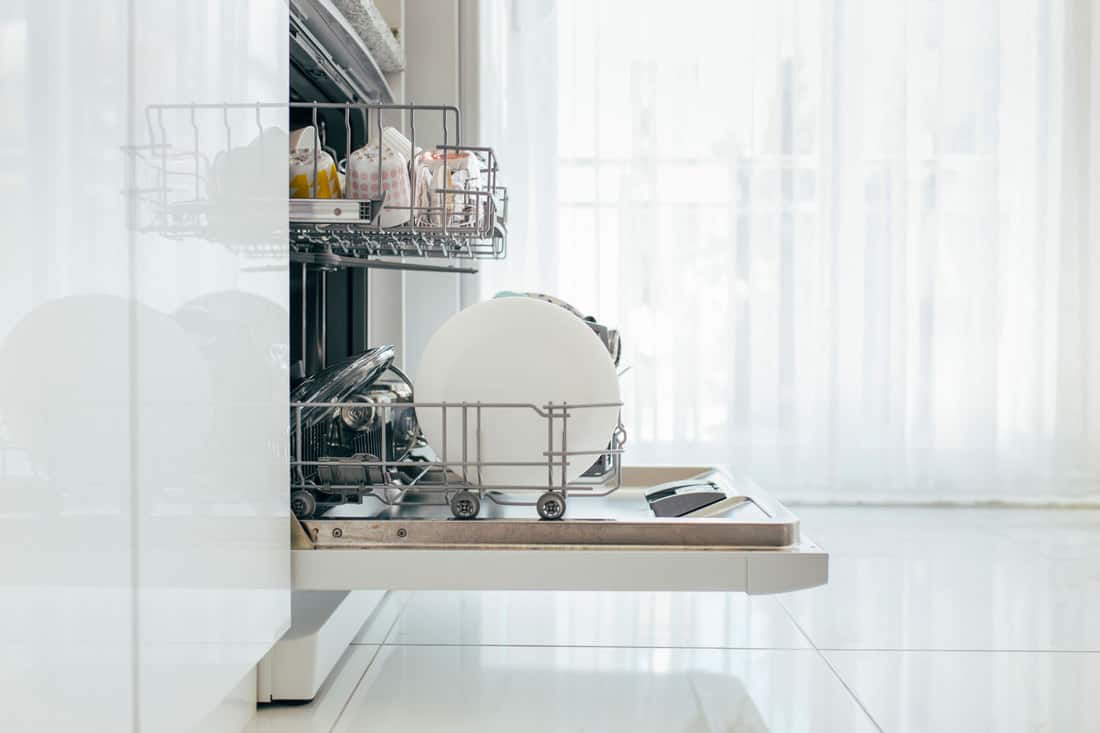
The anchor method is best to secure your dishwasher to the side cabinets, using brackets and screws to prevent your dishwasher from falling forward and potentially causing an injury.
Most dishwashers will arrive with the correct brackets and instructions for anchoring the appliance. If your dishwasher does not come with these vital parts, you will have to purchase them separately at a hardware store.
Generally, you’d anchor the dishwasher to the countertop’s underside using brackets and screws. Insert the side brackets into the bracket slots located at the left and right corners at the dishwasher’s top. Use a carpenter’s level to ensure that the dishwasher is balanced before drilling the screws into place.
However, if the countertop is granite or another stone, drilling into those materials won’t be easy. Your screws could break, or the stone countertop will crack. In these cases, homeowners opt to secure the dishwasher to the adjacent cabinets.
- Attach the brackets and screws at the left and right sides of the dishwasher.
- Drill pilot holes through the screw holes of the mounting brackets into the sides of the cabinets.
- Next, use an electric screwdriver to drill the screws securely in place.
- Recheck the dishwasher with the level, set it on the dishwasher’s bottom rack, and allow it a moment or two to settle before determining if your appliance is level.
How Do I Keep My Dishwasher From Moving?
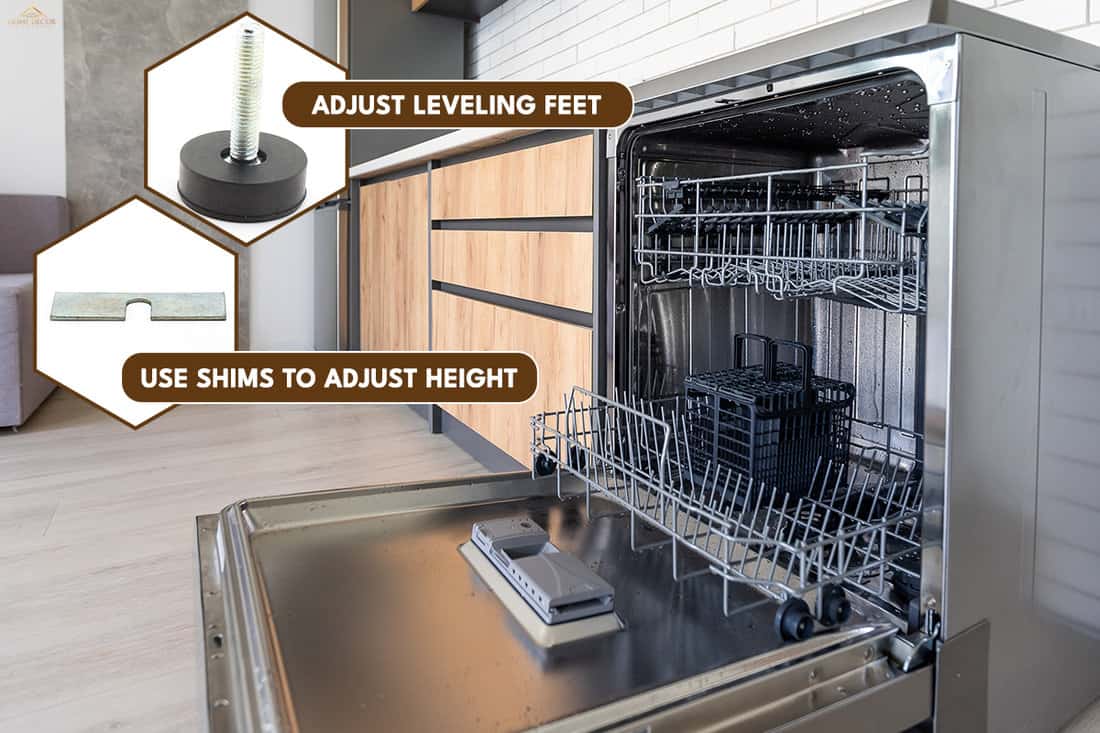
Suppose the flooring in the kitchen beneath the dishwasher is uneven, and it causes your dishwasher to move. You can quickly address this issue by adjusting the dishwasher‘s leveling feet at the back of the appliance. Generally, adjusting the leveling feet can steady the dishwasher on uneven flooring.
Adjust Leveling Feet
Adjust leveling feet by turning to the left to lengthen and to the right to shorten the dishwasher’s legs. Always adjust both legs equally. Failure to do so will affect the dishwasher’s weight distribution that the legs are holding, and the dishwasher will not be level.
Use Shims To Adjust Height
Suppose the dishwasher is too short for the installation opening, causing back and forth movement while the dishwasher cycles. You could address this issue by placing small wooden blocks under the dishwasher‘s feet.
Remember to readjust the leveling feet again to accommodate the changes in height the blocks create. Also, recheck the dishwasher’s stability by opening the door and setting a carpenter’s level on the bottom rack to make sure the dishwasher is stationary.